
B R Y A N
D A H L B E R G ’ S
D E S I G N & P H O T O G R A P H Y W E B S I T E
 B R Y A N
D A H L B E R G ’ S
D E S I G N & P H O T O G R A P H Y W E B S I T E |
| I make the items shown here in my home workshop and sell them on eBay. If you're interested in buying them, go to eBay and use the search terms "Leica film trimmer," "lens hood 50mm Elmar" and "Half case for vintage Leica". If I have them in stock they usually pop up in the first group of listings. I try to make 5 to 10 at a time but I have other work to do, so I may occasionally run out. If that happens, check back in a day or two and I'll probably have another batch ready. | Or if you can't find these items on eBay, please contact me by email. I may have some in stock but haven't had time to keep the listings up to date. bdahlberg@aol.com |
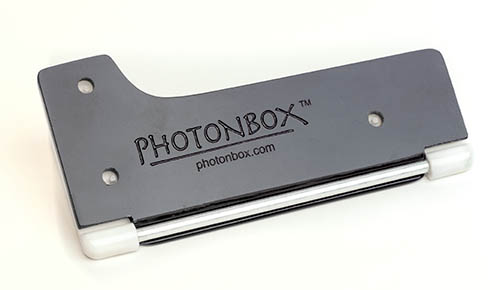 |
Finally — an affordable film trimmer to replace the original Leica ABLON! Photographers who use vintage Leica cameras, as well as the Russian, Japanese and Italian copies like Fed, Zorki, Leotax, Nicca, Kwanon, Janua and many others, know that the film leaders must be cut longer than the standard leaders on 35mm film. They also know that the original Leica trimmers are now considered collectible items and usually command prices of $200–300 on eBay. (They were manufactured only 1931–64). Considering that they're not much more than glorified door hinges, I think it's time for something more affordable. Several hand-drawn templates are available online for printing out on cardboard, but these can be flimsy and inaccurate. |
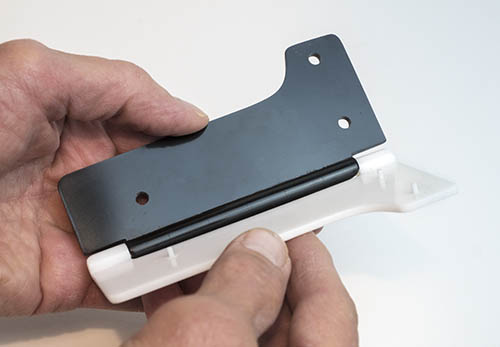 |
I love using my own 1936 Leica, but cannot afford one of the original templates. So I've started making my own and selling them on eBay. You can find them there by searching for Leica film trimmer. They usually show up as the first listing. I sell them for $25, with free shipping. However, because this is a one-man operation, I occasionally run out, and the listing disappears for a few days while I make another production run. If that happens, check again later. Unlike the ones manufactured by the Wizards of Wetzlar, mine are plastic. i pour each one individually into my own hand-made molds using high-quality urethane. They don't have the Leitz name on them, but they're practical, affordable, and they serve the same purpose. |
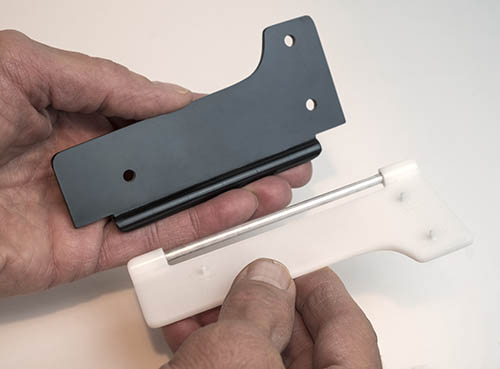 |
The two halves of my design come completely apart, allowing for easy cleaning. Because I cast each one individually by hand, there are occasionally very small bubbles in the surfaces. But these variables never affect the function of the template. I'm continually improving my technique, but after all, I'm making a working tool, not a collector's item.
|
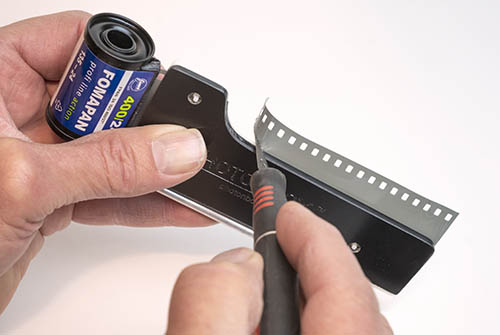 |
Because the template is plastic, you should be very careful to avoid cutting into it with the blade. A narrow blade (like a #11 by Xacto) is best for following the contours of the sharp curve. If you do happen to cut slightly into it, you may be able to smooth it with fine sandpaper. For deep cuts, it may be necessary to stop cutting with it altogether. Instead, use it to draw the curve onto the film with a fine-point marker like a Sharpie. Then cut the film with scissors. If doing this, remember that the cut at the top edge of the film must fall between sprocket holes. If this is not done accurately, you risk damaging your camera. After cutting the film and before loading your camera, make absolutely certain that there are no chips or small fragments of cut film that could get into the camera! I cannot be responsible for how you use this device. |
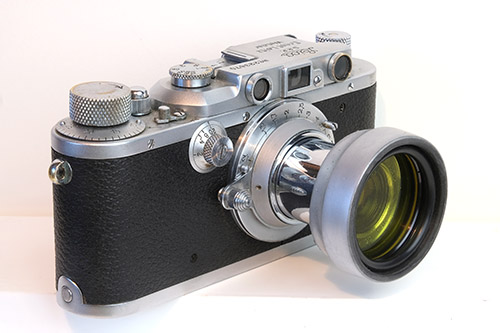 |
NEW! A combination lens hood/filter holder for 50mm collapsible Elmar lenses and similar Itís about the same length and shape as the original metal Leitz FISON hood, but because itís made of rubber instead of metal, it's a little thicker. The rubber allows it to be more affordable while helping to protect your lens and camera from impacts. It is solid black polyurethane rubber; the silver color on the outside surface is aluminum powder impregnated into the surface of the rubber. It is not paint that can rub or flake off, although heavy and/or careless use will probably eventually dull the finish. I am constantly working to improve my products, but I do make them individually, by hand, of rather messy liquid rubber, so they are not cosmetically perfect. The technology in my home workshop just isn't up to that. However, they are guaranteed to function as described. |
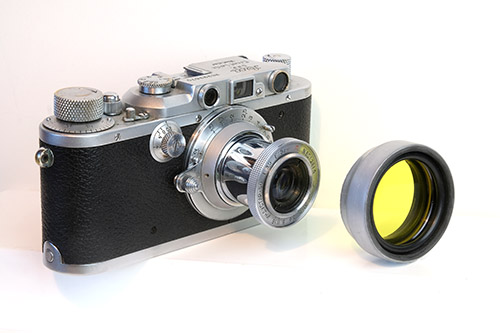 |
In the pictures, the prototype is shown mounted on my 1936 Model III. The lens in the pictures is a Russian Industar-50, which has the same dimensions as a collapsible Elmar 50mm. The hood/filter holder simply pushes onto the front ring of the lens and pulls off. It stays firmly in place when the lens is collapsed. Itís designed to fit the popular collapsible Leica Elmar 50mm lens, and any other similar collapsible lens with a 36mm outer diameter barrel. As far as I know, this includes the 35mm Elmar, 50mm Summar, 35mm f3.5 collapsible Summaron, Industar-50, Industar-22, FED 50 f3.5 and FED 50mm f2. I believe this list is correct, but you should definitely measure the front of your lens barrel before ordering. There are probably at least several others copied from the Leitz design that I donít know about. |
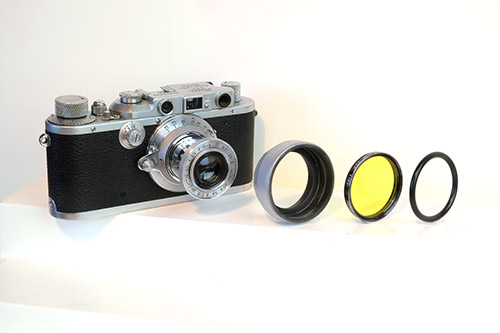 |
Many standard filters will fit because there are no threads to match; the filters just drop in and the rubber retaining ring secures them. The filter retaining area is almost exactly 41mm in diameter. So far, I have personally tested the following:
By the way, if you should ever need a replacement retaining ring, itís simply a black rubber O-ring, available at any hardware store ó 1-3/8Ē ID x 1-5/8Ē OD. Itís also known as a number 220, a standard item in the O-ring industry. Really.
|
|
|
|
| |
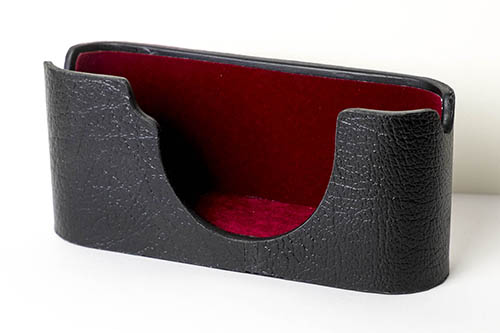 |
New! An affordable, efficient and protective half-case for vintage Leica cameras, serial numbers above 360000 Iím always very careful not to damage my old Leica. And because I actually use it and donít just keep it on the shelf as a collectible, I also donít want to spend a lot of money on a fancy leather case.
Original vintage leather cases are often available online, but (a) theyíre usually in pretty rough shape due to age, and (b) theyíre the clamshell style, with two pieces sewn together. The top half always seems to get in the way, swinging in front of the lens and viewfinder.
|
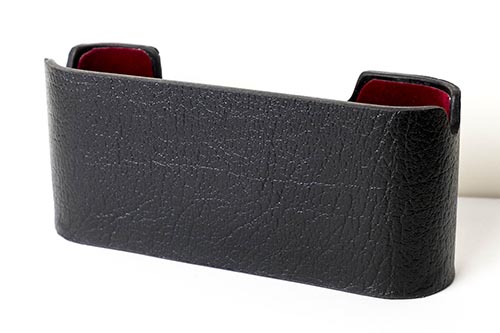 |
Important: The old Leicas with screw-mount lenses came in two different sizes. Cameras beginning with serial number 360001 (starting in about 1940) are 3mm wider than the older cameras. That’s what these cases are designed to fit. (if there’s a demand for the older ones I’ll develop another version of the case to fit them.) After searching several authoritative online sources, I believe that date and serial number to be correct but records are a little sketchy from those years, so if anyone has better knowledge, please let me know. Bottom line is that this case fits Leica camera bodies 136mm wide. They do not fit Leica M-series cameras. |
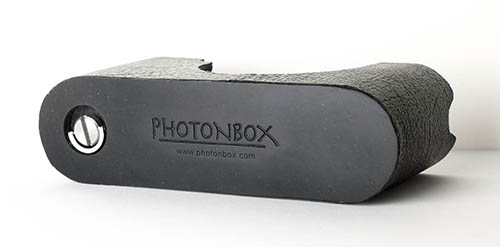 |
A D-ring mounting screw is included with each case. The screw thread on these is 1/4-20, standard American size. The old Leicas have the larger DIN thread; if you need an adapter, let me know when you order; I’ll include one at no charge. (One per customer, at time of order only.) |
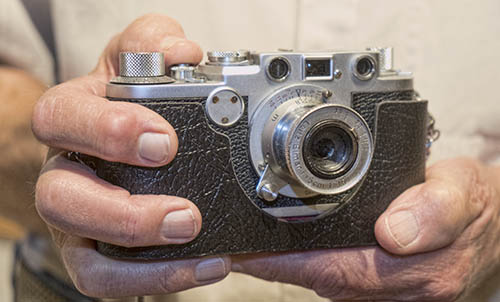 |
|